
Lighthouses of England
Hurst Point

Hurst Point High light (2004). The acetylene production plant is immediately left of the tower.
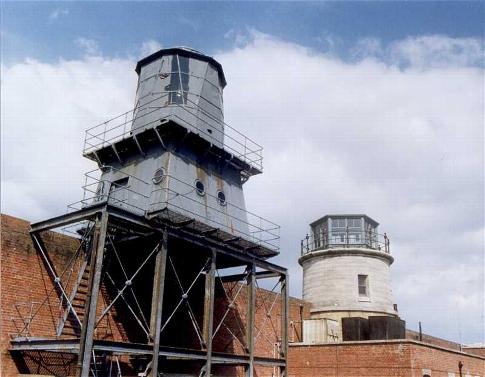
Hurst Point Front light (2004) left. Old low light on the right.
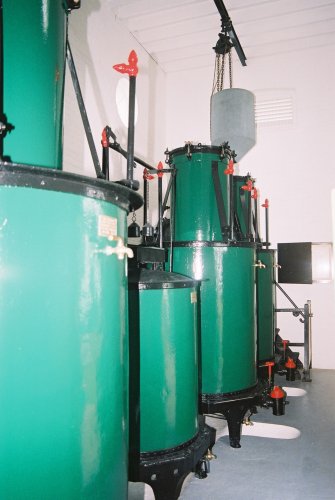
Inside the acetylene production plant (2004)
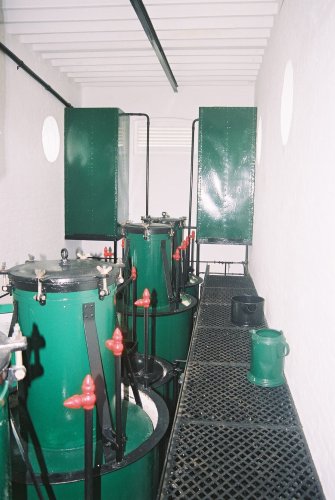
Inside the acetylene production plant (2004)
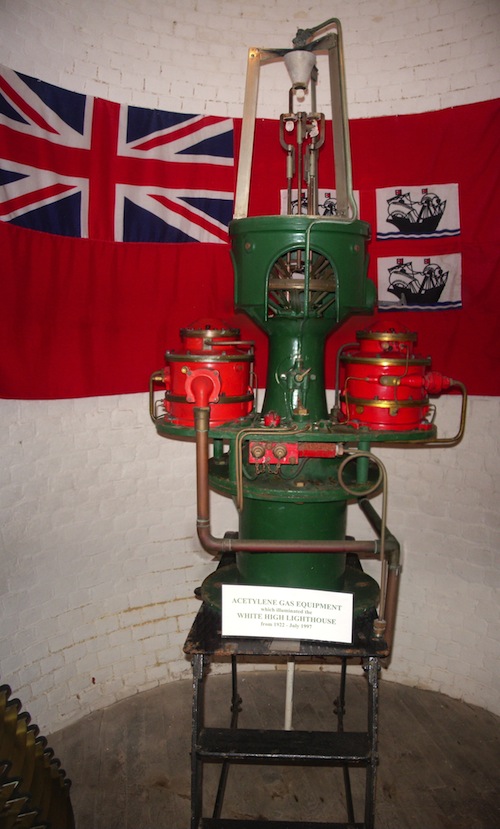
The acetylene gas equipment that illuminated Hurst Point High light from 1922 until July 1997
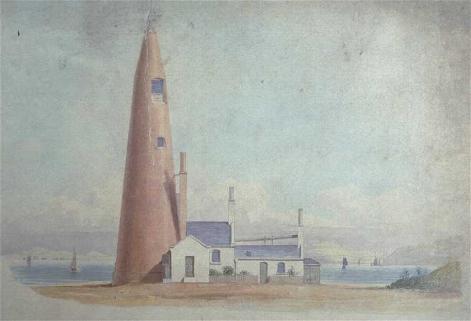
Original plan for Hurst Point High (reproduced courtesy of Trinity House)
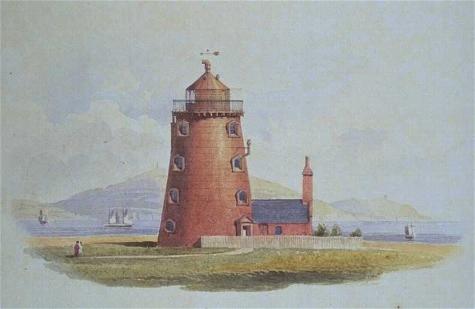
Original plan for Hurst Point Low (reproduced courtesy of Trinity House)
VISIT REPORT
In the afternoon of Monday 20 September 2004, I was fortunate to visit the Hurst Point lighthouse, a station normally closed to visitors. Essentially automatic since 1922, it has been attended for the whole of that time and available for visiting only by special arrangement. I have been to Hurst Point on several occasions in the past, but this was to prove to be rather special, for reasons that will soon become clear.As I have previously described in the notes from my last visit, there are two ways of getting to Hurst Point - the first involves a long – some would say, arduous - walk along the pebble ridge, whilst the second is by a very pleasant ferryboat ride from Keyhaven. Not surprisingly, we chose the second method. On this occasion, in the off-peak season, ferries were roughly every hour and return tickets cost £3.80. Members of the Crane family have been closely associated with this area for many years. Sean Crane is presently the Attendant to the lighthouse, whilst also being involved with the management and supply of the nearby historic monument, Hurst Castle, and the ferryboat company too. Earlier generations of Cranes have also worked in a similar manner. Sean's uncle was the Attendant before him and lived in the nearest of the two keepers houses. It was Sean who kindly allowed us to pay a visit to this most interesting lighthouse.The history of the lighthouses at Hurst Point is extremely rich, for it involves some unique lighthouse designs and equipment, whilst inevitably also being intertwined with the wonderful history of the Castle. For a complete account, you are referred to the excellent publication by Jude James 1, which provides most of the detail you would wish to read about the Castle and its lighthouses. The Castle dates from Elizabethan times and formed an important part of the defences of southern England.
Portsmouth had been a naval dockyard since the late fifteenth century and the story is well known of how Henry VIII, father of Elizabeth I, commissioned the wonderful warship, Mary Rose, only to see her set sail and then turn turtle and sink just outside Portsmouth harbour. The Hurst fort, fairly small but very robust in its first configuration, was round in geometry and occupied what is now the central core of the Castle. Today the whole fortified complex extends in a long, thin massive construction along most of the south-facing beachhead, having been greatly extended in the mid 19th century.The first lighthouse was built on the southern edge of the Spit in 1764 in a location just west of this fort and on a site that has was built over when the castle was extended. The building of this lighthouse was part of a broader plan to build navigational aids for the western Solent entrance both here and on the cliff tops high above the Needles on the western tip of the Isle of Wight. (The present Needles lighthouse was built at its lower level location in front of the rocks themselves in 1859 after a long period of complaints about the clifftop location being frequently smothered by fog.) The entrepreneur who obtained the license to do this fulfilled his obligation to build the structures, only to find that permission to light them (and hence to get paid!) was refused when consideration was suddenly given to build additional lights. Thus the first lighting of the Hurst and Needles lighthouses was delayed for some time, during which the badly served individual seems to have lost his license, most likely by becoming bankrupt.
A second Hurst lighthouse was built soon after the first and was taller also. This became known as the Hurst High light, to differentiate it from its slightly older (Low) sibling. It was located farther inland, and close to the beach on the eastern part of the Spit in a location precise enough that its focussed beam could be used in conjunction with the light from the low one. The idea was that the two lighthouses would create an alignment to guide shipping into the western channel of the Solent that had been greatly reduced in efficacy by the presence of a 'Shingle Bank', quite close to the Hurst Spit. Today, with large ships heading for Southampton, the western channel is not used and they are forced to sail around the Isle of Wight and enter Southampton by the eastern Channel.These two early lighthouses were unique in design, both being conical in a quite exaggerated way that has not been used in other UK structures. They were lit in the usual way with Argand oil-burning reflector lights and served for over 100 years until the massive extension of the Castle necessitated a reconstruction of the lighthouses. The low light had to be demolished to make way for the western extension of the Castle, and a new lighthouse was built on the new north wall of the Castle. A metal ladder that allowed access from outside the Castle was especially hinged to allow it to be pulled so as not to compromise the security of the Castle.The old high lighthouse was also demolished and a new high tower built quite close, but slightly to the east of the original. Archive drawings show that the unusually conical high lighthouse, when first built, had an integral single storey building at its base that was used for keepers’ accommodation. Later, the accommodation had been enlarged such that it was laid out in a linear geometry on either side of the central tower. Two other houses for keepers, presumably of the low light, were close by, and these still exist, though only the closest has been used in living memory. However, in 1922 the high lighthouse was automated.
In these times, the only way of doing this was to use acetylene gas, a method that by then had become common throughout the world as a method of lighting isolated rocks (but not normally wave-swept towers). In this case, the use of acetylene proved to be a significant engineering enhancement, as we shall see. First the high tower was constructed. The new high light was shorter than the old one. This is also unusual because it was usually the case that a taller tower was used to give increased range. In this case, it was not necessary. Greater range could be achieved by using a better optic (more magnification) giving greater intensity. The old tower was by now of a completely inadequate design, unable to accommodate any of the equipment that Trinity House needed to install. However, it seems that use was made of the accommodation buildings from the old High tower by building a connecting passageway from the base of it to the new one which was situated just yards away; the old tower was decapitated down to the first floor level.Next, a complete acetylene production plant was built at the rear of the houses in a specially constructed stone building measuring some 10 x 5 metres and, significantly, some 6 m in height. This is a very rare installation in this form and exists today in a perfect state, having been well preserved by Trinity House. The principle of acetylene production is simple. When water is added to a chemical called calcium carbide, acetylene gas is generated with calcium hydroxide (slaked lime) as a by-product.
Since no mains water has ever existed on the Spit, it must be collected from rainfall. This is collected from the roof of the building and stored in two tanks, each mounted at about 1.5 m height in a corner of the building of the left hand side of the entrance. The main body of the building is filled with four tall reactors, or digesters, standing in a line and with two on each side of a gas storage vessel, which faces you as you enter the building. Each of the digesters has a valve that closes when acetylene pressure reaches a certain level and stops the addition of further water. However, as pressure builds in the digester, it opens a valve in the storage tank, allowing the addition of further gas to the store. As gas is drawn from the storage tank, it passes sequentially through three further tanks containing charcoal, which dries and cleans the acetylene ready for distribution to each of the two lights. When all of the carbide in a digester was used up, it could be emptied into drains and channels cut out underneath the digesters and which allowed the slaked lime to flow into an external storage tank. The digester could then be cleaned and refilled.
Although slaked lime is a potentially useful chemical, it appears in this case that the lime was simply removed from the pit at intervals and left in piles on the beach.The installation of such an acetylene plant effectively automated both lighthouses and removed the need to employ so many keepers on a permanent basis. The plant was simple, reliable and required comparatively maintenance. Perhaps the reason for using such a large-scale production plant was to reduce the frequency with which men were needed to service it. Whatever the case, this installation lasted until 1996 when it was finally replaced by a different kind of automation. Like water, there is no mains electricity on the Spit. The installation of such a cable is impractical because it would suffer fracture under the variable conditions existing in the shifting bank of pebbles. Therefore, all power is produced locally by two diesel generators which switch on and off automatically at periodic intervals, and which are housed in a new building located alongside the north side of the tower. Of the three doors on the front of the building, the left and right allow entry to each of the diesels, whilst the third opens onto the battery banks. The electricity they generate is used to re-charge two banks of lead-acid accumulators. Across the back of the building, and connecting the left and right rooms, is a narrow, dark passageway that houses the diesel control equipment.
The entrance door of the 1865 tower leads through a small vestibule, in which is mounted a small wash-hand basin, into the space at the base of the tower. The inside of the tower is hollow up to the level of the low light room, a single level below the lantern itself. There was some wall-mounted instrumentation, but little else except for a standard metal holder for several panes of diamond-shaped replacement lantern glass. Stone stairs lead up from the left in a clockwise rotation via several short landings and past several windows to the floor of the low light. This sectored RWG (red/white/green) light shines in the arc from 038.6 to 043.6 through a window that happens to be next to the original staircase into the lantern. However, the new installation is of a type that takes up so much space that it blocks off the entire ladder. As a result, a new entrance was created into the lantern up a vertical steel ship-style ladder, whilst the old stair ladder has been completely closed off from below. Interestingly, access to it can still be made from the lantern (although there is, of course, nowhere to go!) This equipment is comprised of two horizontally mounted cream painted metal cylinders, about 1.5 m in length, that were each showing a light from the end adjacent to the window. These were of a type that I have never seen before and it seemed strange to me that it should take up so much room when the light for the main optic was so small. A certain amount of control equipment was attached to the walls of the room, which was otherwise empty.In the lantern, the optic is, arguably, rather ugly, having neither the symmetry nor the form that gives rise to many other truly beautiful designs. It must be fit for purpose, however, and is constructed in a number of sections, none of which rotate, but which are intended to show narrow beams in pre-defined directions – one to the west as part of the leading light arrangement with the Low light, the other to the east to direct traffic from that direction. A narrow red sector is also part of this beam on the side close inshore. The remainder of the optic either has no prisms at all, or is merely to provide a low intensity light to the south. The electricity from the batteries powers a small light consisting of three small modern bulbs – little bigger than a torch bulb that you might consider are totally inadequate for their purpose, especially when considering the older type of electric bulbs that have been used over many decades and which have provided such intense lights in the past. Standing at only some 500 mm distance from this light, it easy to look almost directly at it, which would not have been possible in the past. However, calculations show that this is perfectly adequate type of bulb to use as a source through the original optic. The light holder is a mount that, if a light fails, automatically changes its position and brings a second array of bulbs into position.
The character is four white flashes every 20 seconds.When a change was needed in the alignment of the leading lights, it was found that this could not be achieved using the existing two lighthouses. Thus, a new low lighthouse was built on the north rampart, this time consisting of a lantern on a small skeletal structure that could be moved if the alignment changed again. The structure was painted bright red to enable it to be used as a daymark and remained so until this function was discontinued at about the same time as the electrification of the lights took place. A new roof was given to the structure and it was painted grey. The old red roof was dumped rather unceremoniously inside the Castle walls where it remains today. Of great interest from the lantern level, of course, is the fantastic view, which spans a wonderful sector over the entire Solent waterway. The view of the Needles is outstanding from this location, especially on this day when the sun was highlighting them in its brilliant radiance, but the other views of the Castle, and the Isle of Wight to the south, together with those back across the Spit and its mud flats in the north, are breathtaking when the visibility is as good as it was on this day and when the air has been cleansed and clarified by the short bursts of penetrating rain that we suffered on our way here.
After a thoroughly interesting and worthwhile visit, we returned on the ferry in brilliant sunshine – a contrast to the rather stormy conditions in which we arrived. The visit had been surprising in so many ways; the unusual arrangements used to provide the lights, the astonishing existence of such a unique acetylene plant and the diverse history of the location with its unique older towers. All contributed to a very memorable afternoon.Ref Jude James, “Hurst Castle: An Illustrated History", St Barbe Museum and Art Gallery, Lymington (2003)
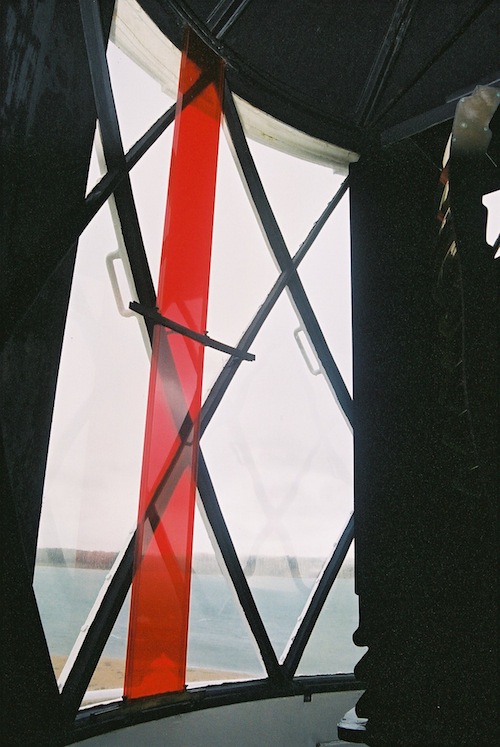
The red sector of the main light (2004)
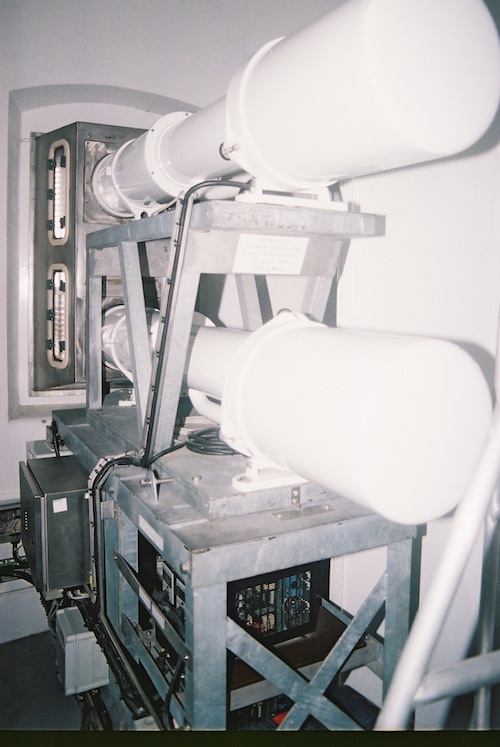
The sectored RWG low light (2004)

Hurst Point lighthouse (2011)
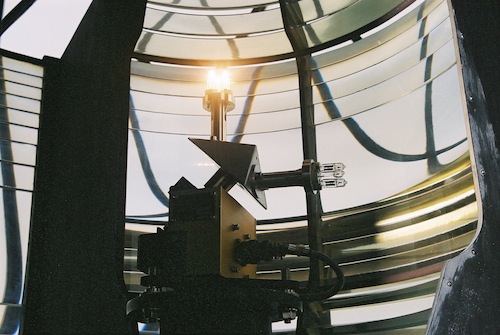
Inside the optic at Hurst Point (2004)
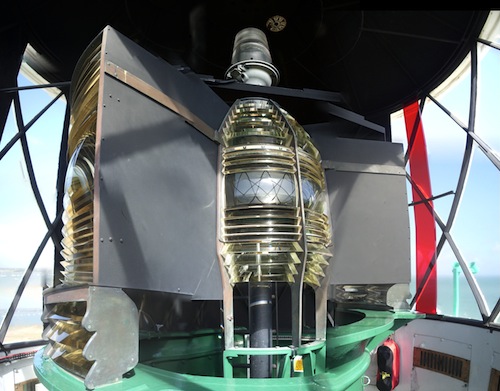
The optic at Hurst Point (2011)
VISIT REPORT (2011)
On 11 September 2011, a visit was sponsored by the Association of Lighthouse Keepers (ALK), which was to include a boat trip to the Needles. However, due to strong winds, this part of the event had to be cancelled. The lighthouse was opened for visitors during the day.
I found the lighthouse to be essentially the same as it was during my visit in 2004. The automated light is powered by batteries, that are charged periodically by one of two diesel engines in the adjacent buildings (shown below).
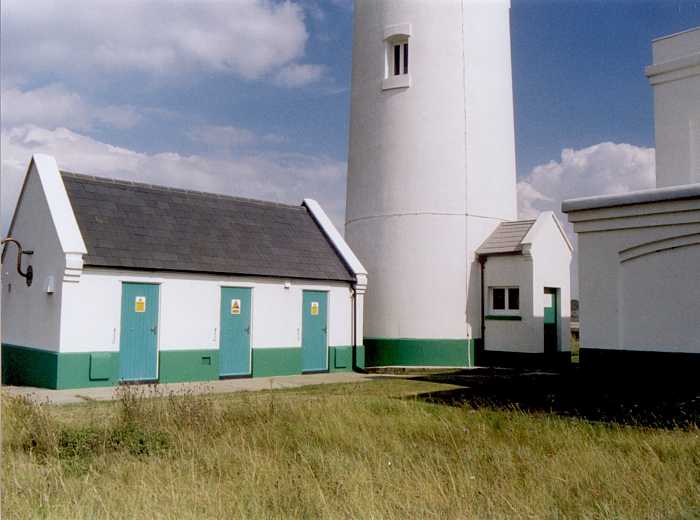
The building that houses the generating equipment. The centre door is the battery room, whilst the left and right doors contain the two diesel engines. (2004)
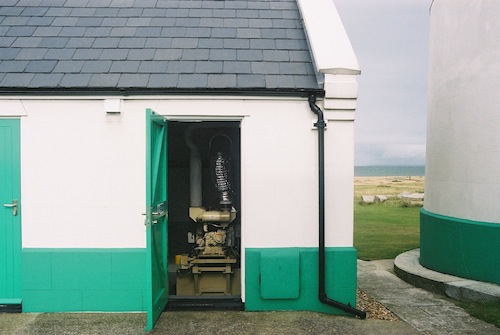
The building housing one of the diesel engines (2004)
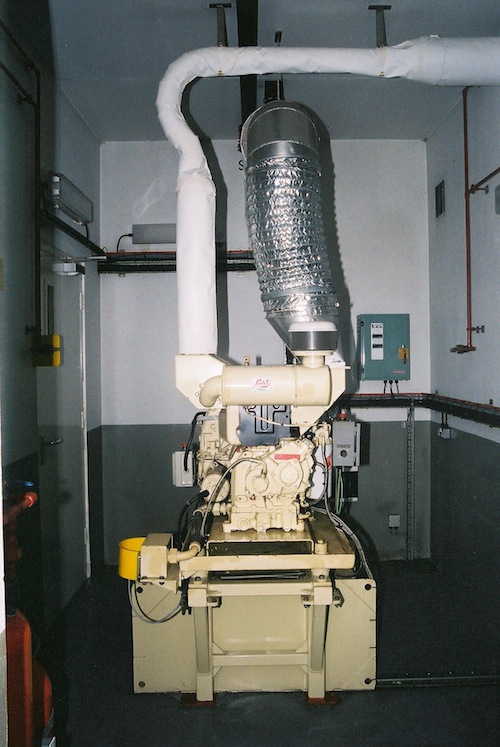
One of the diesel engines providing power to charge the batteries (2004)